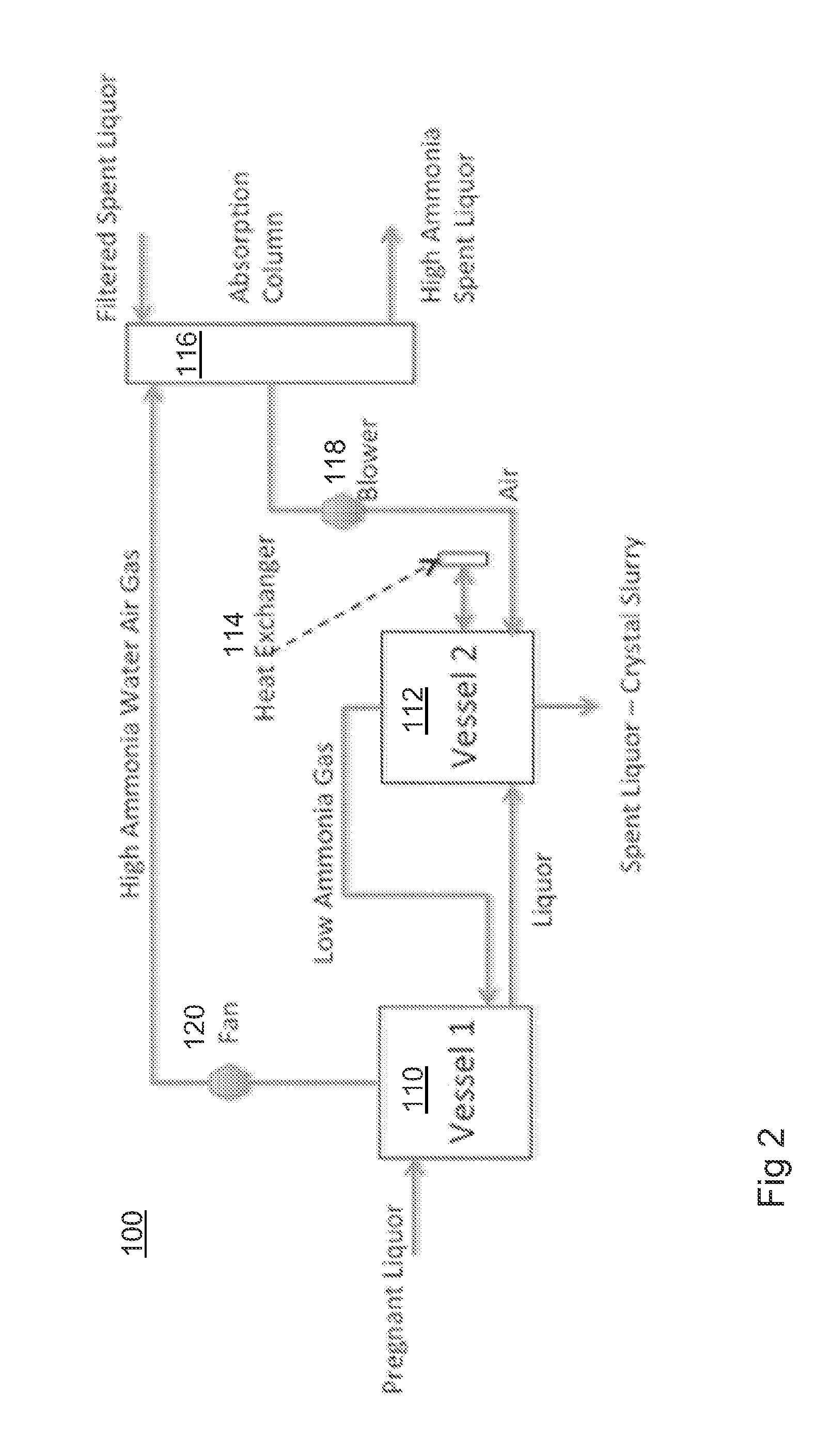Process for recovering zinc and/or zinc oxide ii
a technology of zinc oxide and recovery process, which is applied in the direction of process efficiency improvement, chemistry apparatus and processes, and mercury compounds, etc., can solve the problems of high operating cost of each of these processes, high product purity problems, and inability to successfully commercialize these prior zinc recovery processes, so as to facilitate the recovery of a substantial portion, reduce the use, and avoid the effect of zdc crystal formation
- Summary
- Abstract
- Description
- Claims
- Application Information
AI Technical Summary
Benefits of technology
Problems solved by technology
Method used
Image
Examples
example 2
[0149]A leach liquor with composition 50 g / L NH3, 75 g / L NH4Cl and 46.5 g / L zinc was stripped of the ammonia by heating to near boiling in an open vessel. The solution was then left to sit without further heating while crystals formed within the liquor. The crystals were filtered off and analysed. They were found to contain 62.5% Zn and 12.7% Cl indicating that it was predominantly zinc hydroxy chloride. The filtrate removed from the crystals contained 11.6 g / L Zn and 11.4 g / L NH3 confirming that the majority of the NH3 had been removed and this caused the precipitation of the majority of the zinc.
example 3
[0150]A leach liquor solution containing ˜50 g / l NH3 in liquor containing 50 g / l NH4Cl and 34 g / l Zn was stripped of the ammonia by air injection stripping process according to the stripping process shown in FIG. 2. The leach liquor solution is heated to keep the temperature around 90° C.
[0151]FIG. 6 shows the change in pH, ammonia concentration, ammonium chloride concentration and zinc concentration in solution as the ammonia is stripped from the solution. The solution has an initial pH of around 11 which decreases to ˜7.35 as the NH3 decreases to 6.8 g / l.
[0152]FIG. 7 shows the change in the ratio of water to ammonia in the vapour coming off the solution as the NH3 is stripped using a combination of air and heat. The ratio of water to ammonia in the vapour increases very rapidly as the pH decreases below 7.9, indicating that it is increasingly difficult to remove NH3. This is confirmed when plotting the ratio of NH3 / NH4+ in NH3 solutions as a function of pH, as shown in FIG. 8. Thi...
example 1
[0155]The zinc containing precipitate crystals resulting from leach example 2 were reacted with water at various elevated temperatures to allow the chloride containing crystals to undergo hydrolysis to convert the crystals to Zn(OH)2 and / or ZnO with removal of the chloride ions into solution.
[0156]FIG. 10 shows the residual chloride content of zinc containing crystals precipitated by ammonia stripping and then hydrolysed in water at varying temperatures to reduce the chloride level from the initial 6.4%. The plot indicates that a low chloride Zn crystal product can be produced by hydrolysis of the zinc containing precipitate from the stripping stage, if hydrolysis is conducted at an elevated temperature—for example greater than 100° C. A run of particular interest is where the crystal feed containing 6.4% chloride was hydrolysed at 130° C. for 4 hours at 20% solids (w / v). The chloride content was significantly reduced to 0.50% through this hydrolysis process.
Oxidised Zinc Ores
[0157]...
PUM
| Property | Measurement | Unit |
|---|---|---|
| concentration | aaaaa | aaaaa |
| temperature | aaaaa | aaaaa |
| temperature | aaaaa | aaaaa |
Abstract
Description
Claims
Application Information
 Login to View More
Login to View More - R&D
- Intellectual Property
- Life Sciences
- Materials
- Tech Scout
- Unparalleled Data Quality
- Higher Quality Content
- 60% Fewer Hallucinations
Browse by: Latest US Patents, China's latest patents, Technical Efficacy Thesaurus, Application Domain, Technology Topic, Popular Technical Reports.
© 2025 PatSnap. All rights reserved.Legal|Privacy policy|Modern Slavery Act Transparency Statement|Sitemap|About US| Contact US: help@patsnap.com



